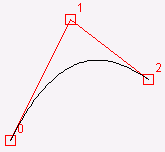My script sets this value in editor. How can I keep the the changes when saving the scene?
class Anchor:
var offset: Vector3
var connected: Node3D
var end: bool
var anchors: Array[Anchor]
I found this issue, so I tried fiddling with _get_property_list(), but that didn’t work. It also doesn’t seem that I can export the var.
Thanks


@ICastFist @Bezier I agree with your overall explanation, but I would instead recommend using the
class\_namedirective instead of adding it as an auto-load.Auto-load will make it that a single
Anchorinstance always exists in the root scene, and thatAnchorelsewhere in your code will always reference that single(ton) instance.If you want
Anchorto behave like other built-in classes in your scripts and the editor, you need to give it aclass\_nameand *not* use the same name ("Anchor") for an auto-load.Had to look up how to do that, as apparently the docs don’t have that kind of information. I did come across this SO question. So, the solution would be:
#anchor.gd class_name Anchor var offset: Vector3 var connected: Node3D var end: boolAnd that would create this new, readily accessible class throughout the project, correct?
@ICastFist more or less, but you still probably want your Anchor to extend something, be it Object, Node, Node2D, Control, etc.
If your anchors are going to be part of the scene tree, as in you’re adding them as node children of (an)other node(s), then you will need to at least extend
Node. If you want your anchors to have a position, then Node2D (or 3D depending on how you need it to behave). If your anchors are part of your ui, then Control might directly be the best, and so on.If your anchors are not going to be part of the tree itself, but just stored and/or passed around by nodes as data, I would encourage you to give this page of the docs a read: https://docs.godotengine.org/en/stable/tutorials/best_practices/node_alternatives.html
Thanks for that link, I now have learned why it didn’t originally work (and that other features like reference counting aren’t employed by default!).
The solution, if anyone needs this in the future:
# Separate file extends Resource class_name Anchor @export var offset: Vector3 @export var connected: Node3D @export var end: boolIt adds namespace pollution, but I’ll deal with it by prefixing it with the original script’s class.
@Bezier yeah it’s good to know about the differences between Object and RefCounted when you’re making custom data containers.
Personally, I’ve been suffixing my custom/“game object” resources with “-Rs”, as in I have
PlayerRs,FileRs,DownloadRs, etc.The namespace pollution is definitely part of the trade-off from just preloading wherever you need the class.
@ICastFist also yes, the docs aren’t that great at providing info on this in the reference.
There *is* a good page in the manual, however: https://docs.godotengine.org/en/stable/tutorials/scripting/gdscript/static_typing.html
OP @Bezier you probably want to check this out if you haven’t found it already by now, specifically the “Custom variable types” section.